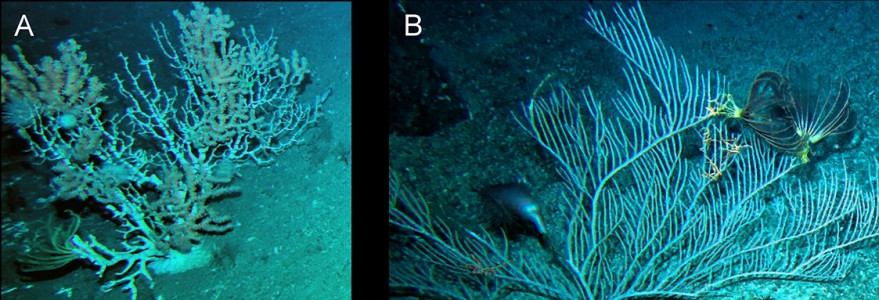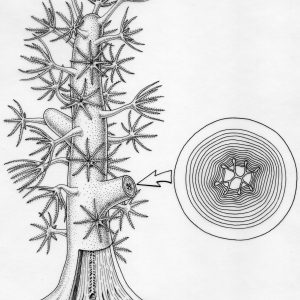Prof. Mikołaj Zapalski from the UW Faculty of Geology contributed to the research on Palaeozoic corals. An international team of researchers has prepared a detailed analysis of perfectly preserved Oligophylloides corals from the Upper Devonian of Morocco and revealed that juvenile colonies have a skeleton that is anatomically very similar to that of some extant octocorals – a group that is common in recent seas but considered to be poorly represented in the fossil record.
The Devonian (419-358 million years ago) was a period of a great reef development in the marine sphere accompanied by a large increase in coral biodiversity. Although groups of these animals are known from nearly the entire Palaeozoic there is one group characteristic of the Devonian that colonized diverse habitats including those in deep waters – the enigmatic and outre Heterocorallia.
The skeleton of heterocorals is branched and has a narrow central canal internally divided by “septa”, and published reconstructions to date have interpreted these corals as having a single polyp at the tip of each branch and the “septa” as being homologous with septa in other corals. One of the most common heterocorals is Oligophylloides, described by the late Prof. Maria Różkowska.
The research led by Prof. Błażej Berkowski from Adam Mickiewicz University accompanied by Prof. Mikołaj Zapalski from the Faculty of Geology at the University of Warsaw resulted in a detailed analysis of perfectly preserved Oligophylloides corals from the Upper Devonian of Morocco and revealed that juvenile colonies have a skeleton that is anatomically very similar to that of some extant octocorals – a group that is common in recent seas but considered to be poorly represented in the fossil record. A comparative study was then carried out that involved recent specimens and underwater photos (from as deep as 2000 m) from waters around Tasmania (Australia).
The thorough investigation by Prof. Berkowski’s team, published in “PLOS ONE”, led to the conclusion that Oligophylloides representatives, and probably all heterocorals, are in fact an extinct group of octocorals and that the surface of the stem and branches would have been covered in numerous polyps. Consequently, the “septa” are not true septa but actually supporting structures inside the branch, strengthening it in a turbulent environment. Similar structures of diverse design are also known in recent octocorals.
Dr. Phil Alderslade (CSIRO, Hobart), a specialist on extant octocorals, and Dr. Emilia Jarochowska (Friedrich-Aleksanders Universitat, Erlangen) were also involved in this study.
Publication details:
Berkowski B., Zapalski M.K., Jarochowska E., Alderslade P. (2021). “Early development and coloniality in Oligophylloides from the Devonian of Morocco—Are Heterocorallia Palaeozoic octocorals?”, “PLOS ONE”, 16(9): e0257523. https://doi.org/10.1371/journal.pone.0257523





